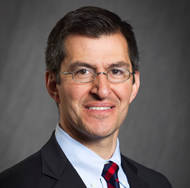Alexander Norbash, MD, MS, FACR, professor and chair of the department of radiology at University of California San Diego Healthcare and co-director of the 2020 Radiology Leadership Institute Summit Spotlight, contributed this post.
Imagine yourself back in summer 2019. You have a large amount of cash in the bank, a generous stock portfolio that is skyrocketing and accumulated vacation time. Knowing what you knew then, perhaps it was reasonable to take a huge amount of money and plan on a once-in-a-lifetime trip to Africa for a photo safari in March 2020, purchase that ultra-performing German racing sedan as a daily driver and buy a beautiful pied-à-terre in Tribeca, which could always become a vacation rental. How would those decisions look now, as we’re still in the midst of the COVID-19 pandemic?
Clearly, we cannot predict the future with certainty. However, we can imagine across a range of possible futures. As an example, in our personal and professional lives we can picture a dystopian future, a pragmatic future and an exceptionally optimistic future. Even in summer 2019, a bit of caution regarding the 2020 future would have been warranted.
If we use our predictions regarding the future to guide our actions, a single-point forecast will almost invariably disappoint us. Especially if our single-point forecast underlines deficiencies or limitations that we currently possess which will adversely influence our position in the future. We then prepare, learn and invest our energies in shoring up our weaknesses and deficiencies for that single-point future which never actually comes to pass. And all that misguided preparation and energy could have been allocated to constructive steps which could have secured a brighter future had the time, energy and effort been expended to address the real future. A lost opportunity.
The alternative is preparing for a range of possible futures. If there are certain preparations that would be beneficial across a broader range of futures, such as the dystopian, pragmatic and exceptionally optimistic future, then we see the logic in investing and planning on the beneficial preparations which secure a broadly brighter future.
Scenario planning allows us to think outside of the box, across a broad range of potential futures or scenarios, in order to understand which preparations will benefit us across the broad range of potential futures. When we think in these terms, ideally two things come to pass; the futures we plan for are more likely to happen than single-point forecasting, and the proactive measures we take are therefore more likely to be beneficial.
Scenario planning not only teaches us to see the future as a broad range of possibilities that can be addressed, but also results in both adaptability and flexibility of thought that can guide us as we move our practices forward through these uncertain times.
If you’re ready to learn more about how you can apply scenario planning at your practice, I encourage you to attend the 2020 RLI Summit Spotlight. I hope you’ll join me on Sept. 12, where together we’ll further dive into the concepts of scenario thinking, recognize resources that can be used to improve and maintain your leadership skills and engage in targeted breakout sessions exploring real-life cases.
As the healthcare landscape continues to adjust to meet the ever-changing needs of our communities, we must respond by turning challenges into opportunities through scenario planning.
Please share your thoughts in the comments section below, and join the discussion on Engage (login required).

